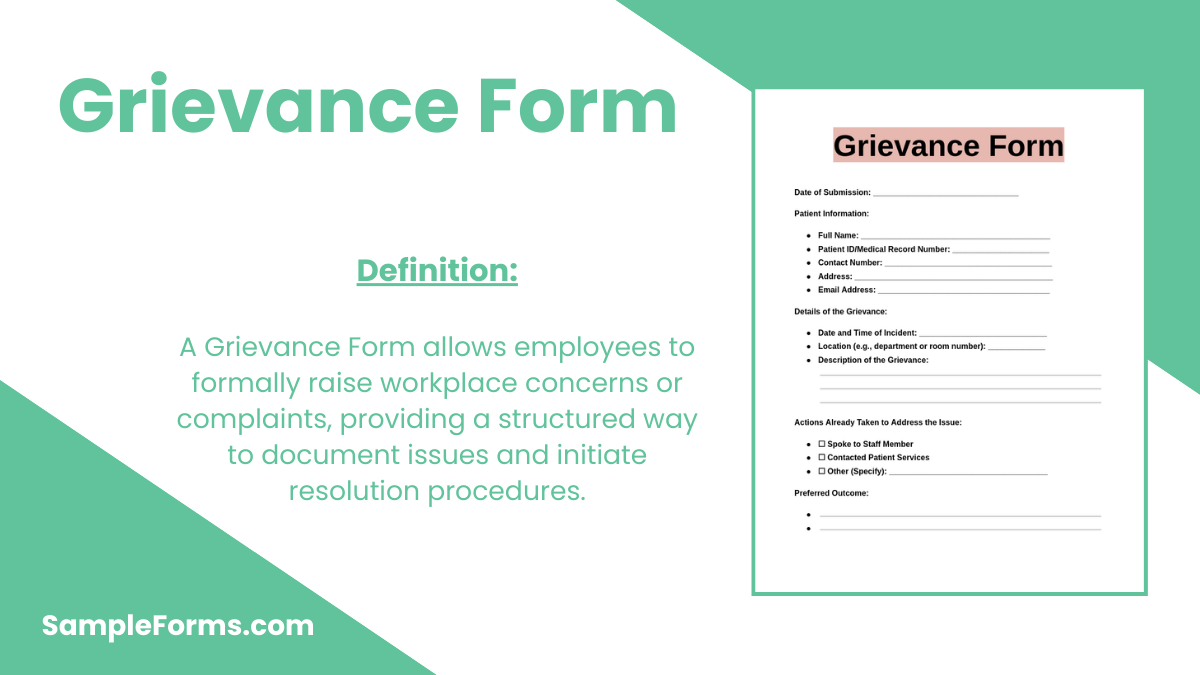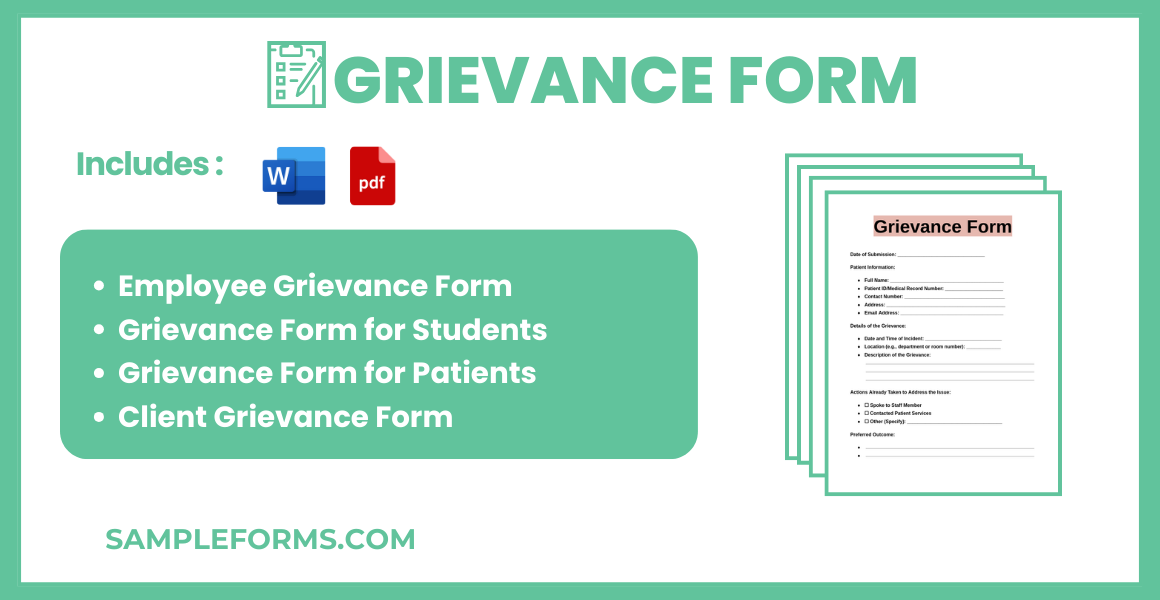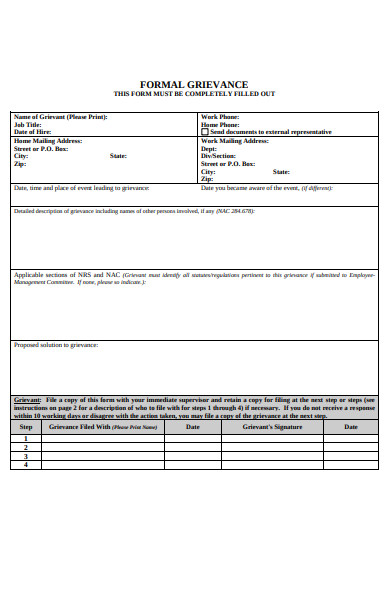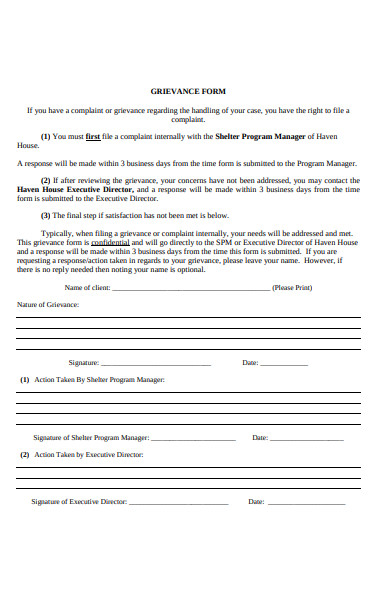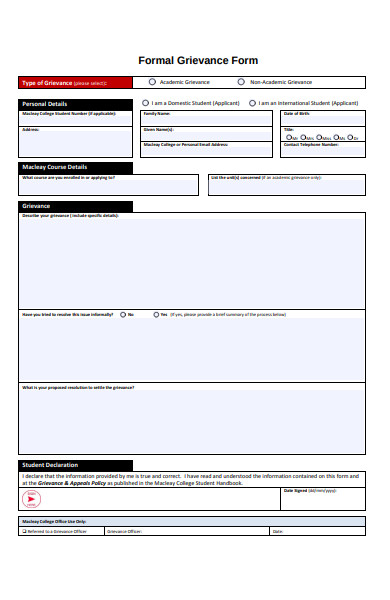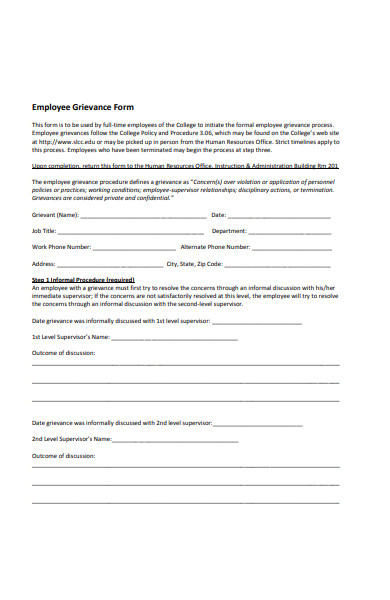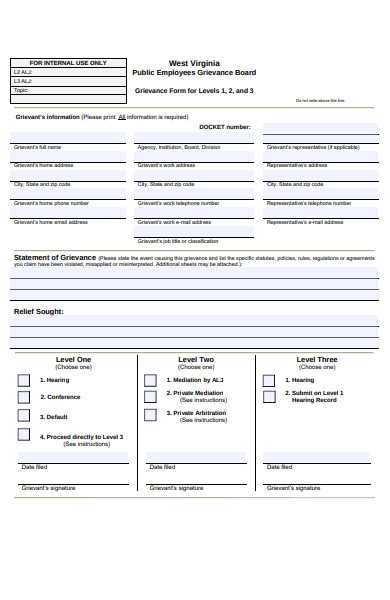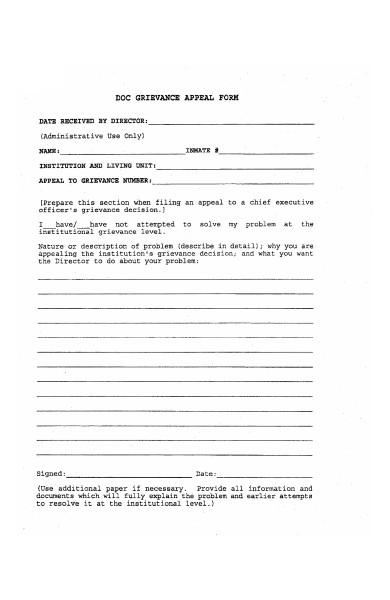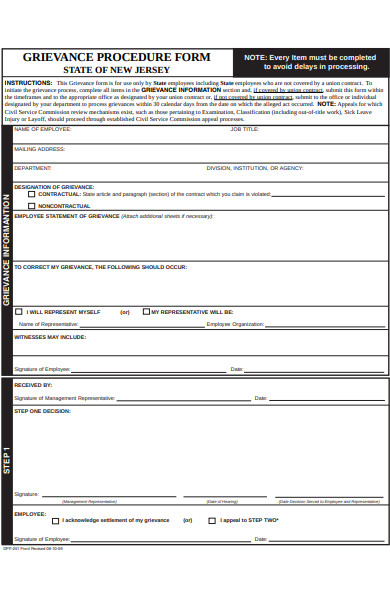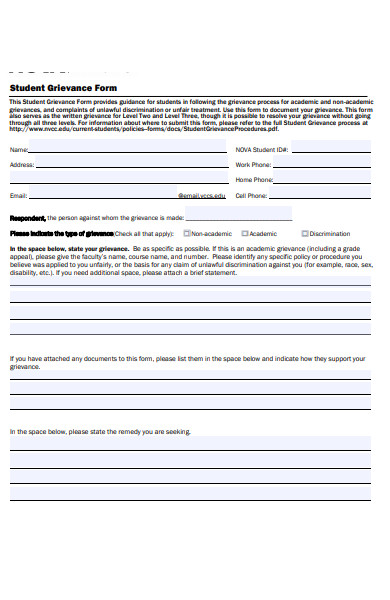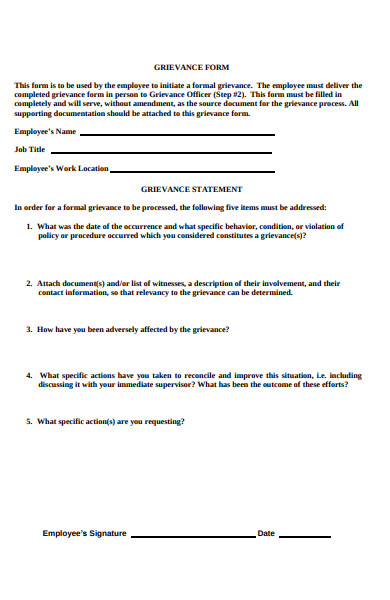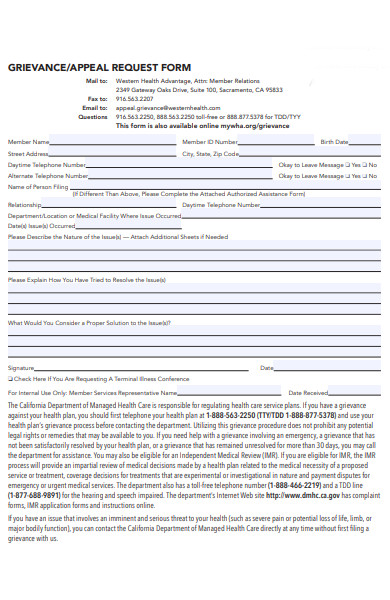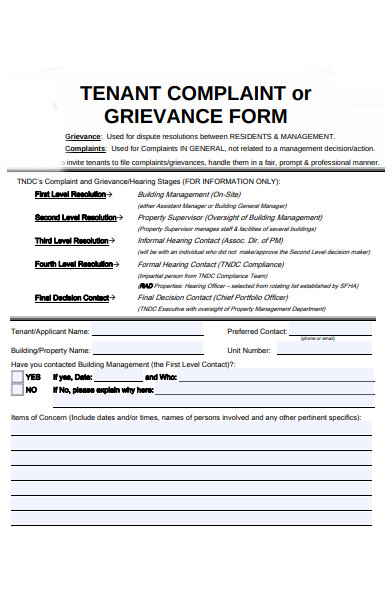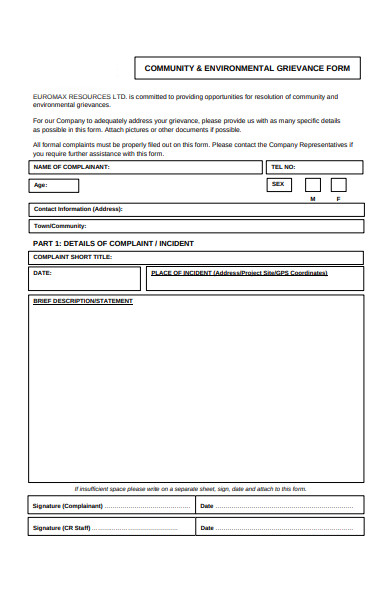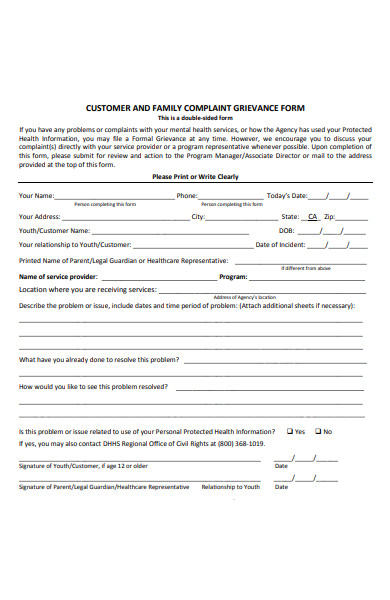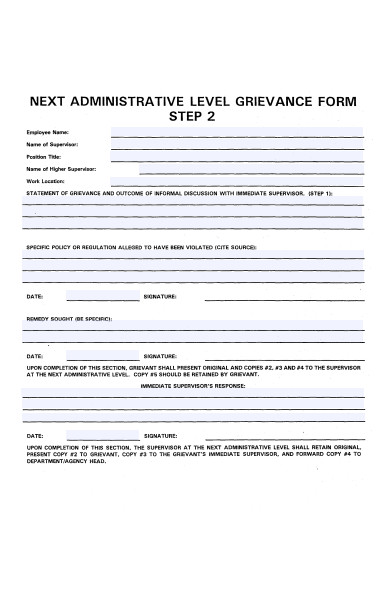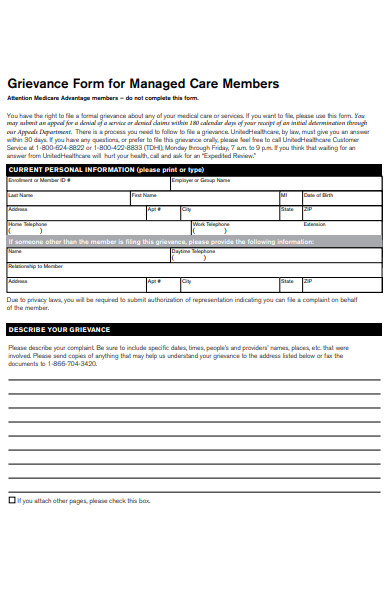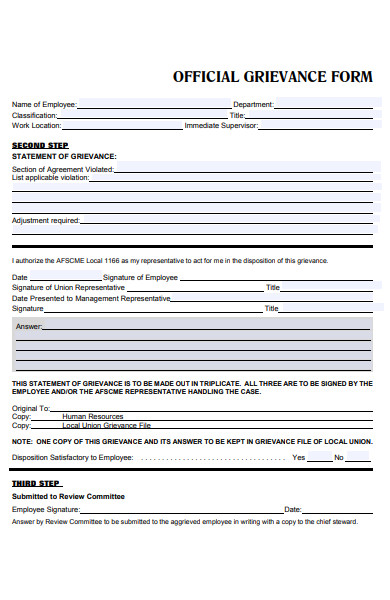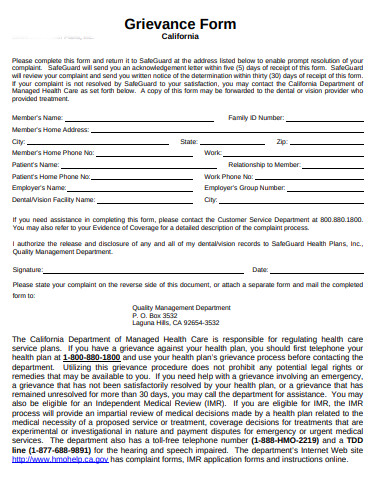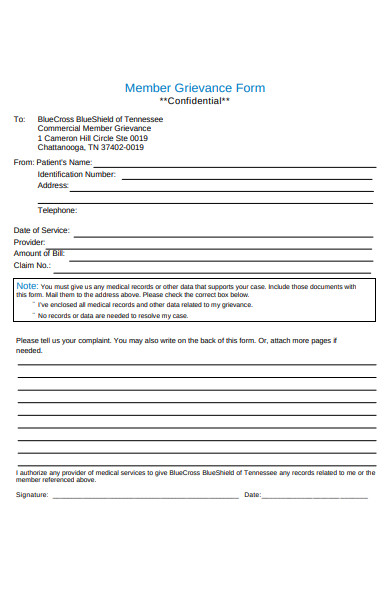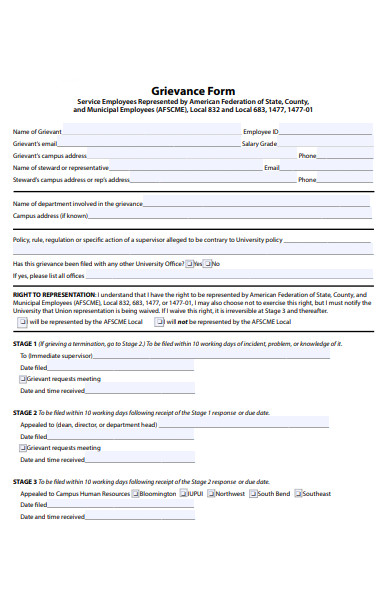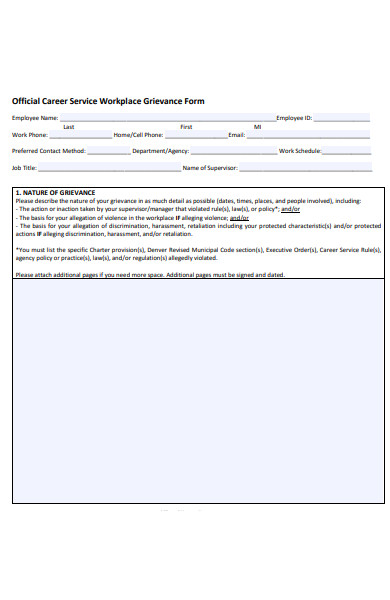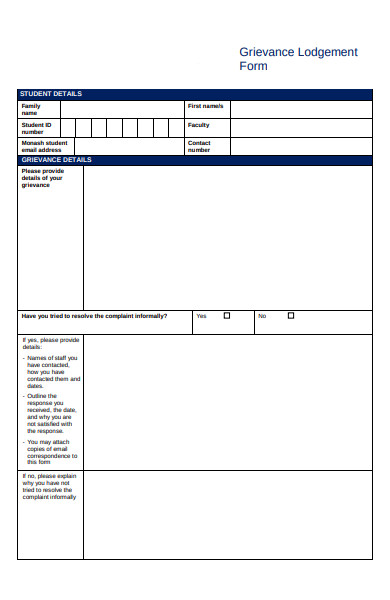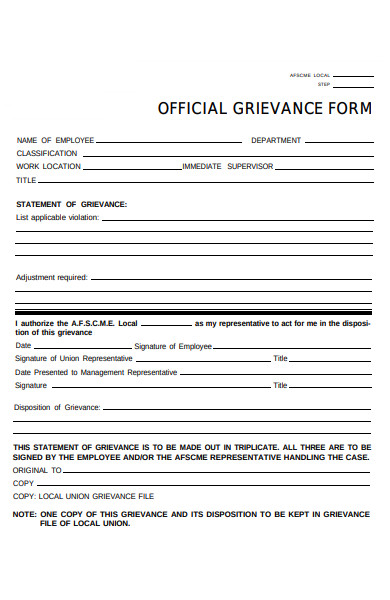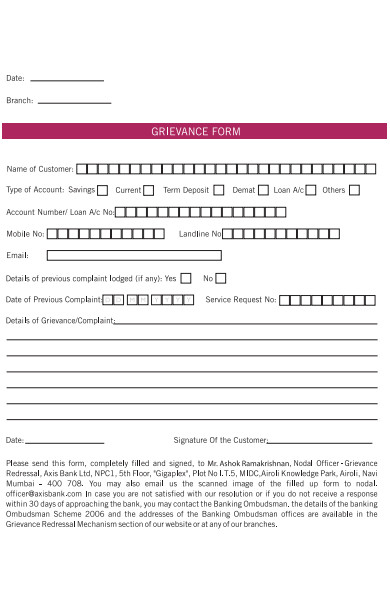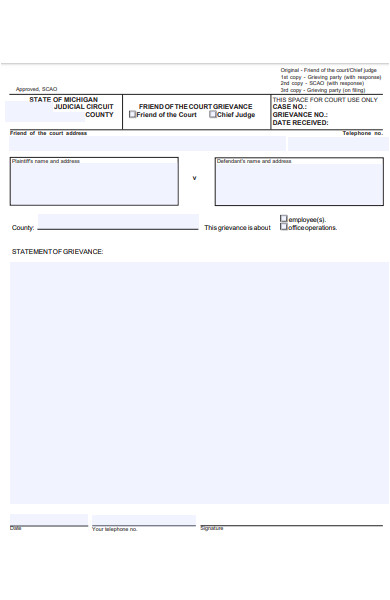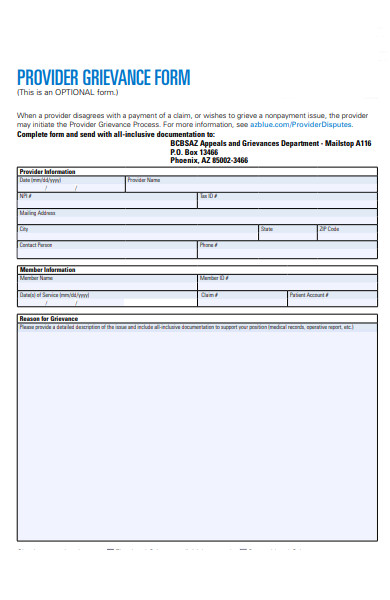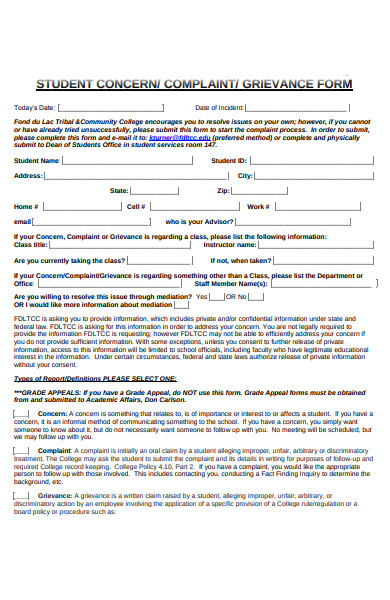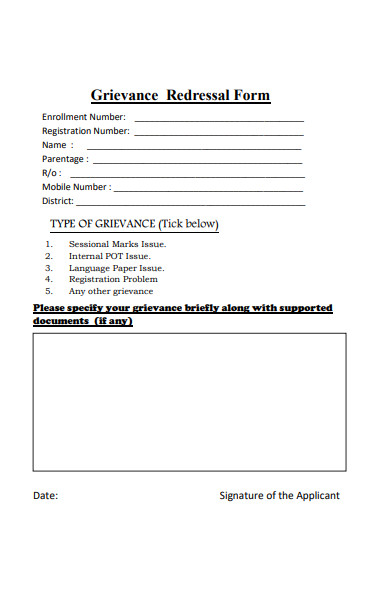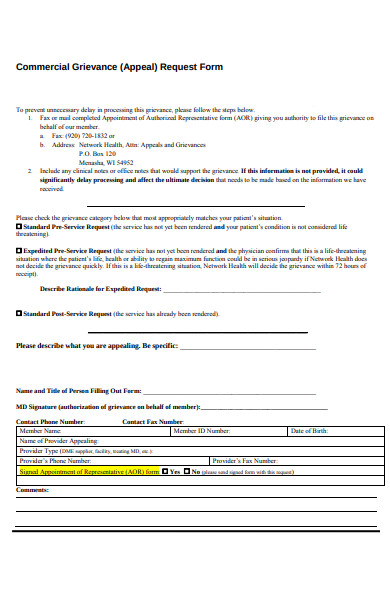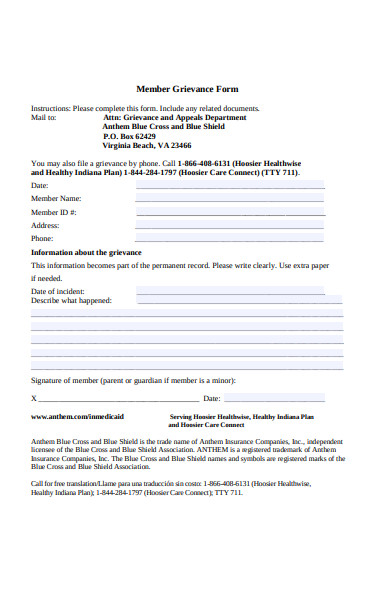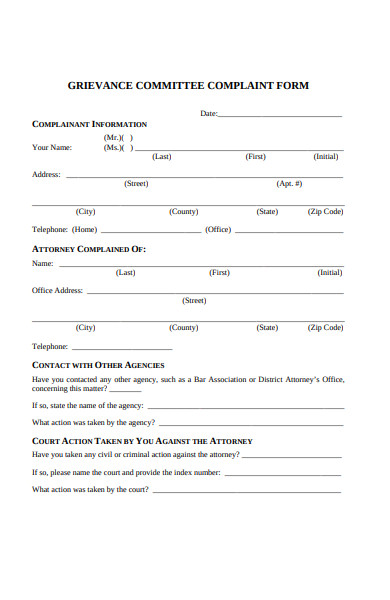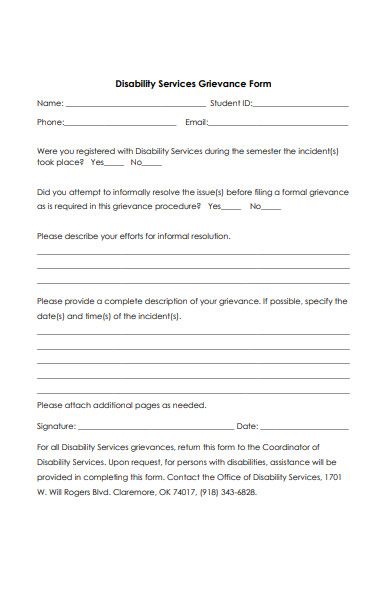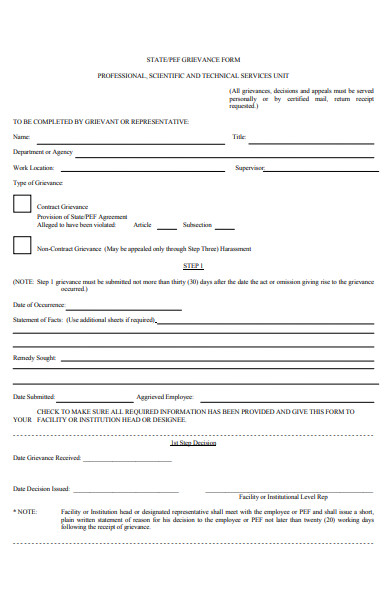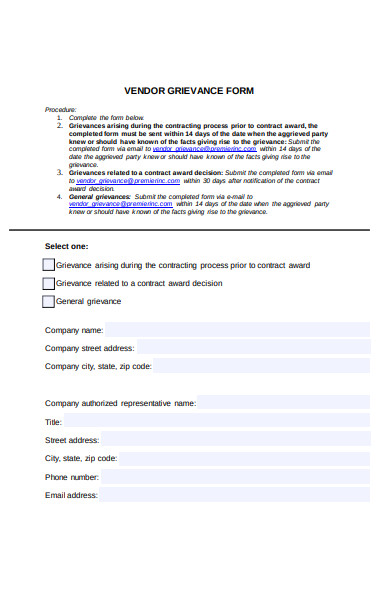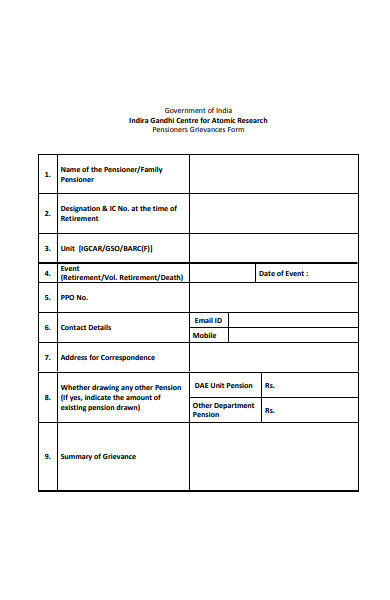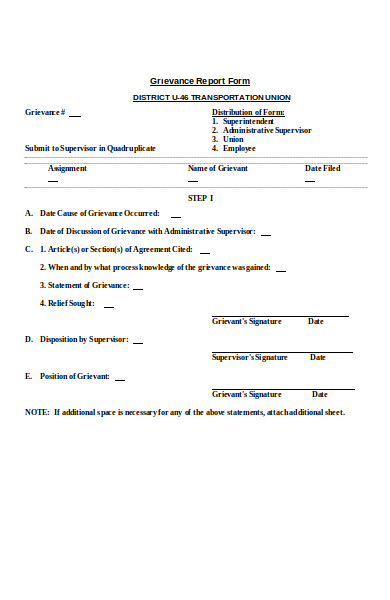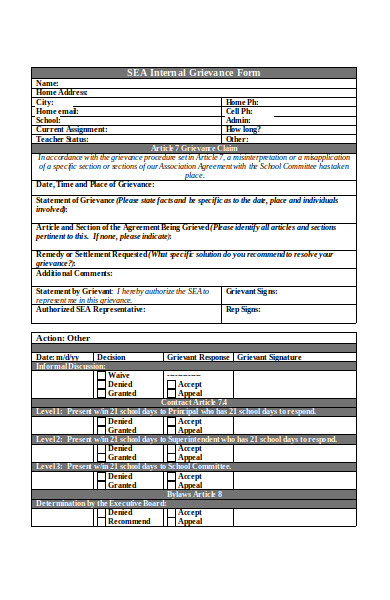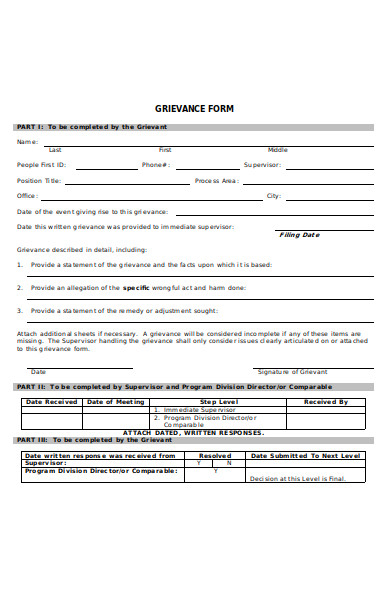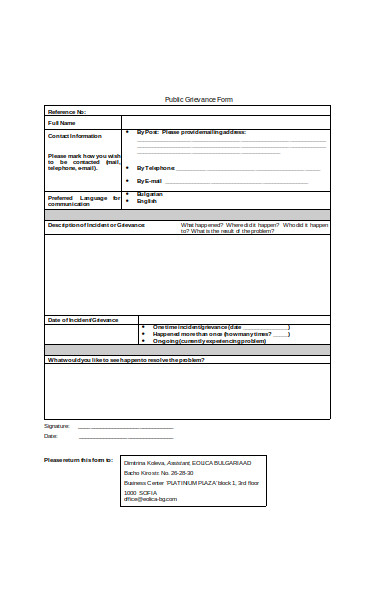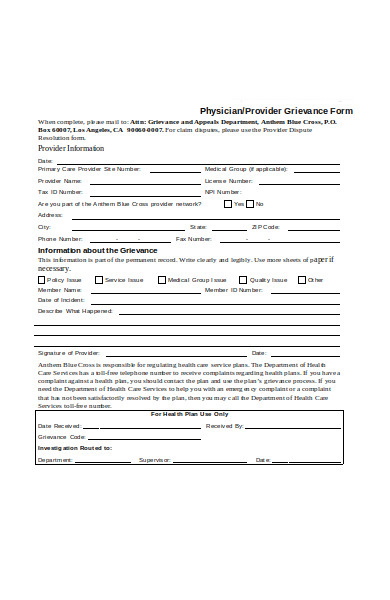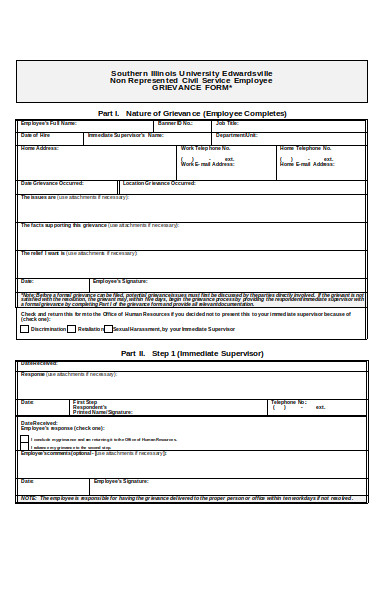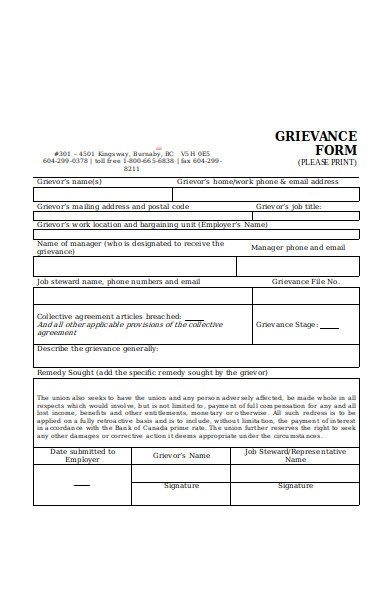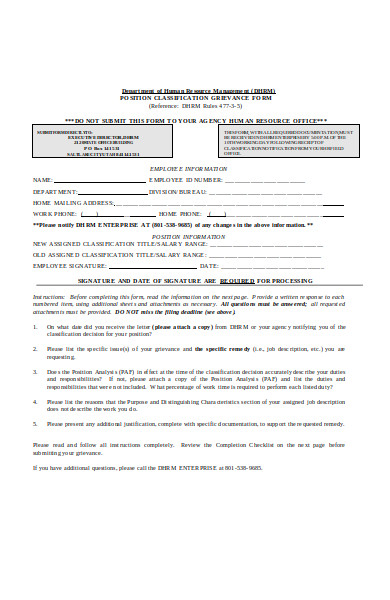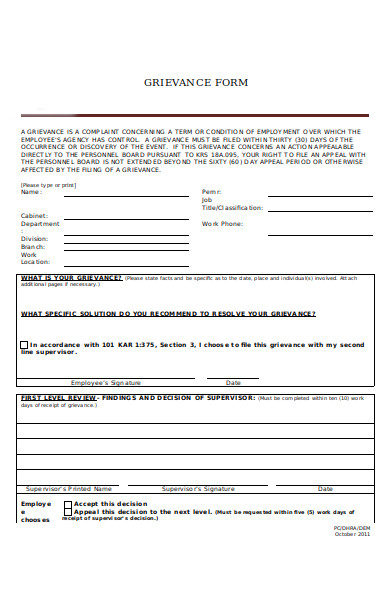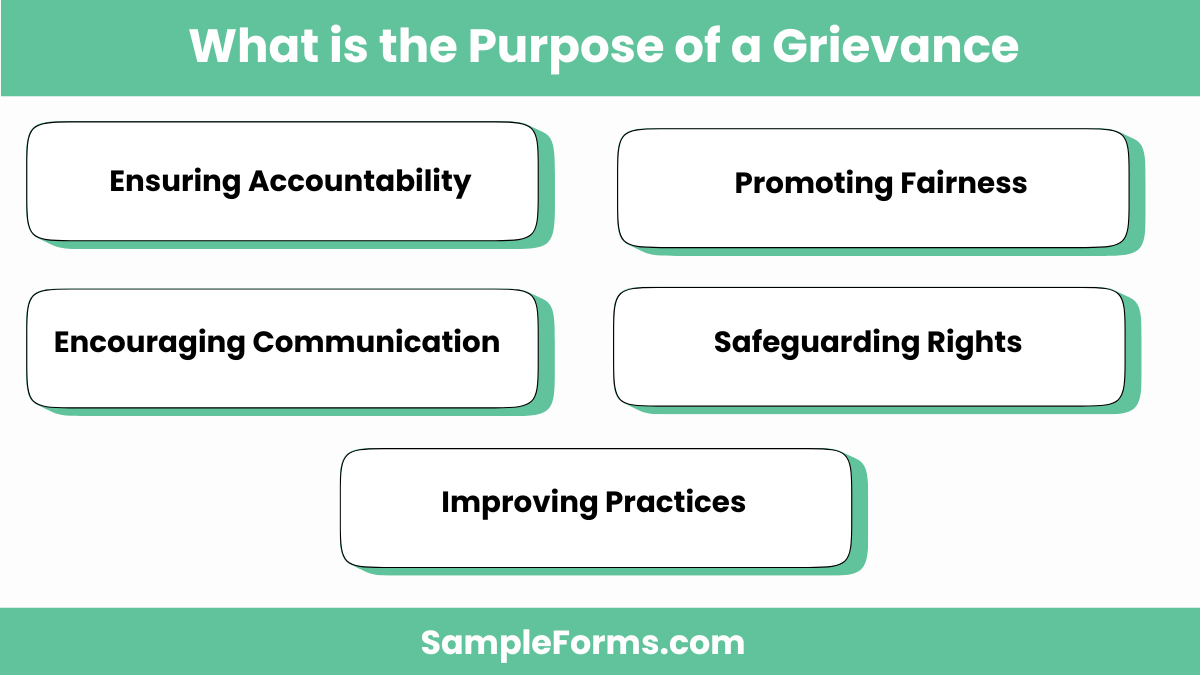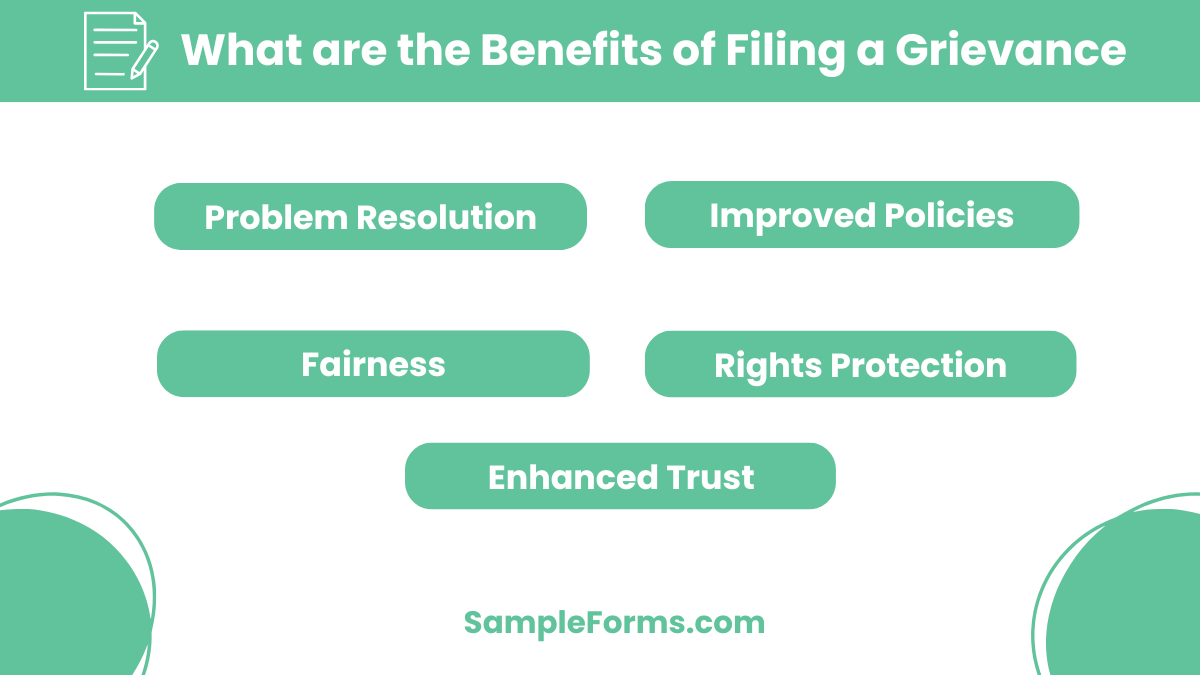An Grievance Form is a structured tool for reporting and resolving workplace issues professionally. This guide provides comprehensive insights and examples to help you create a clear, actionable grievance form. Whether it’s for employee concerns, student issues, or patient feedback, this guide also ensures your Simplify the grievance process with an Employee Grievance Form. Explore detailed examples and guidelines for addressing employee concerns with clarity and professionalism.grievance forms are effective and legally compliant. Learn to document complaints efficiently, define resolutions, and create a respectful, supportive organizational environment. With this guide, organizations can enhance communication, improve employee satisfaction, and maintain compliance.
Download Grievance Form Bundle
What is Grievance Form?
A Grievance Form is a formal document used to report complaints or concerns in a workplace, school, or other organization. It ensures issues are communicated clearly, enabling structured investigation and resolution while promoting fairness and transparency.
Grievance Form Format
Title: Employee Grievance Form
Date: [Insert Date]
Employee Details:
- Name of Employee
- Department and Position
Details of Grievance:
- Description of the issue
- Date, time, and location of the incident
Desired Resolution:
- Specific actions requested by the employee to resolve the issue
Supporting Information:
- Names of witnesses (if any)
- Documents or evidence provided by the employee
Acknowledgment:
- Confirmation by the employer that the grievance has been received
Signatures:
- Employee Name and Signature
- HR Representative Name and Signature
Employee Grievance Form
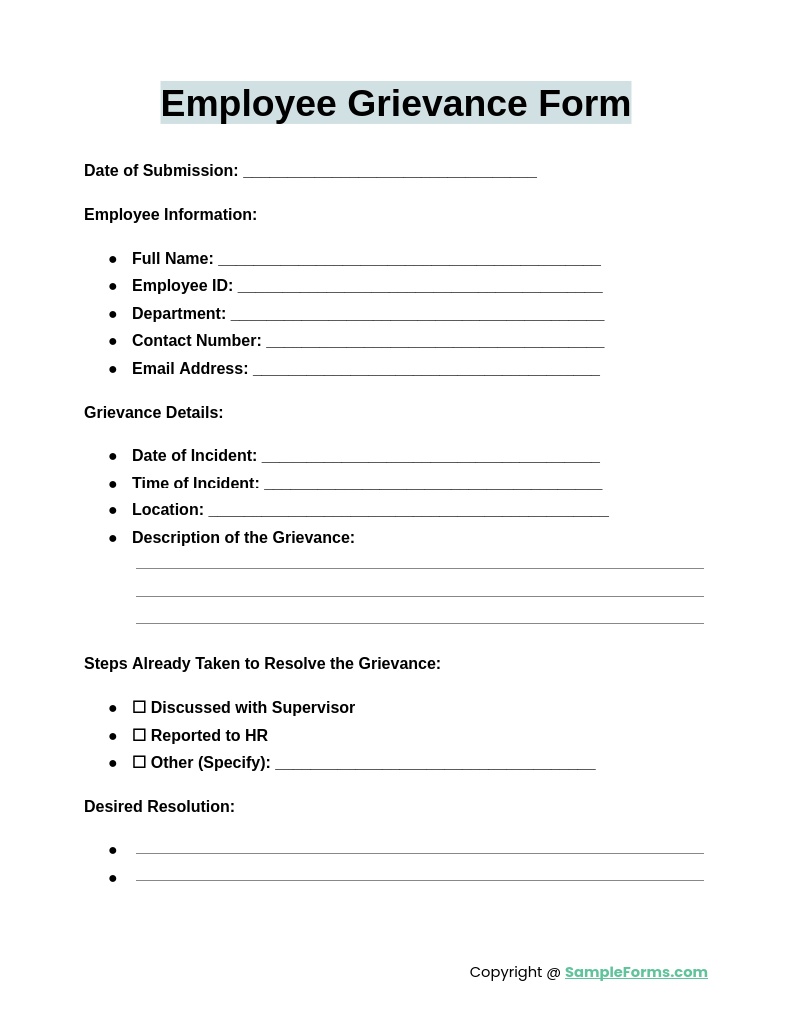
An Employee Grievance Form is designed for employees to report workplace concerns such as unfair treatment or policy violations. It mirrors the structure of a Grievance Complaint Form to ensure formal documentation and clear resolution steps.
Grievance Form for Students
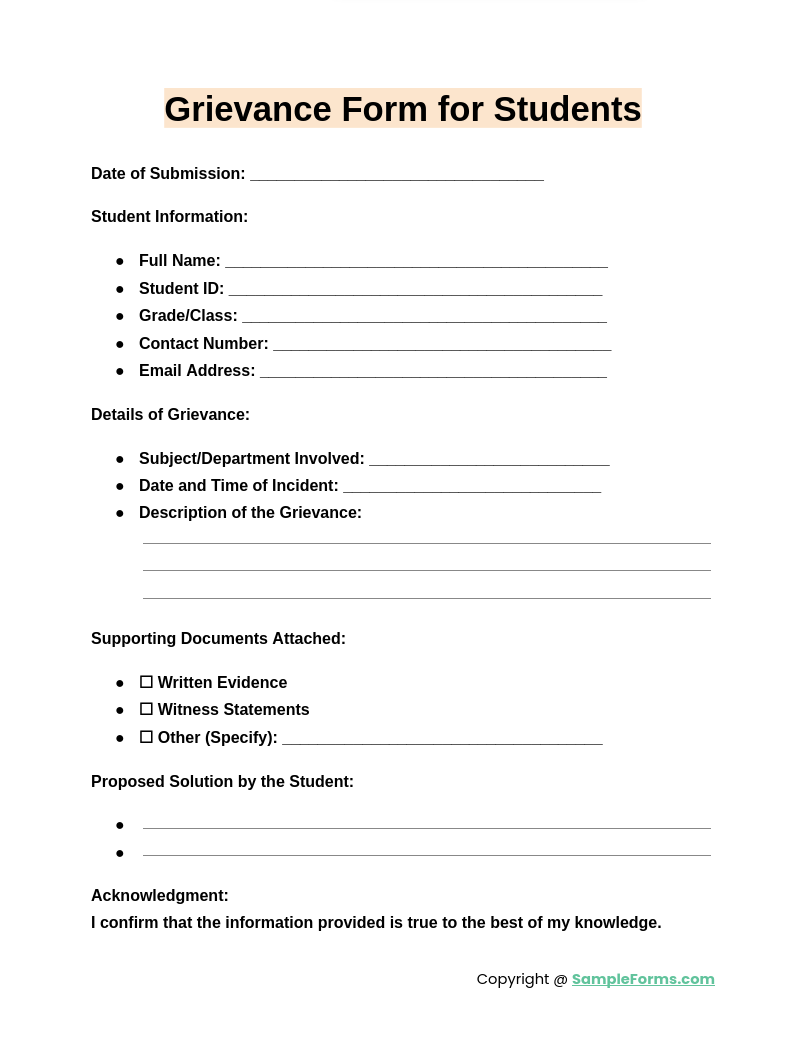
A Grievance Form for Students allows students to address academic or administrative issues. Similar to a Legal Petition Form, it ensures complaints are documented properly for systematic investigation and action by educational authorities.
Grievance Form for Patients
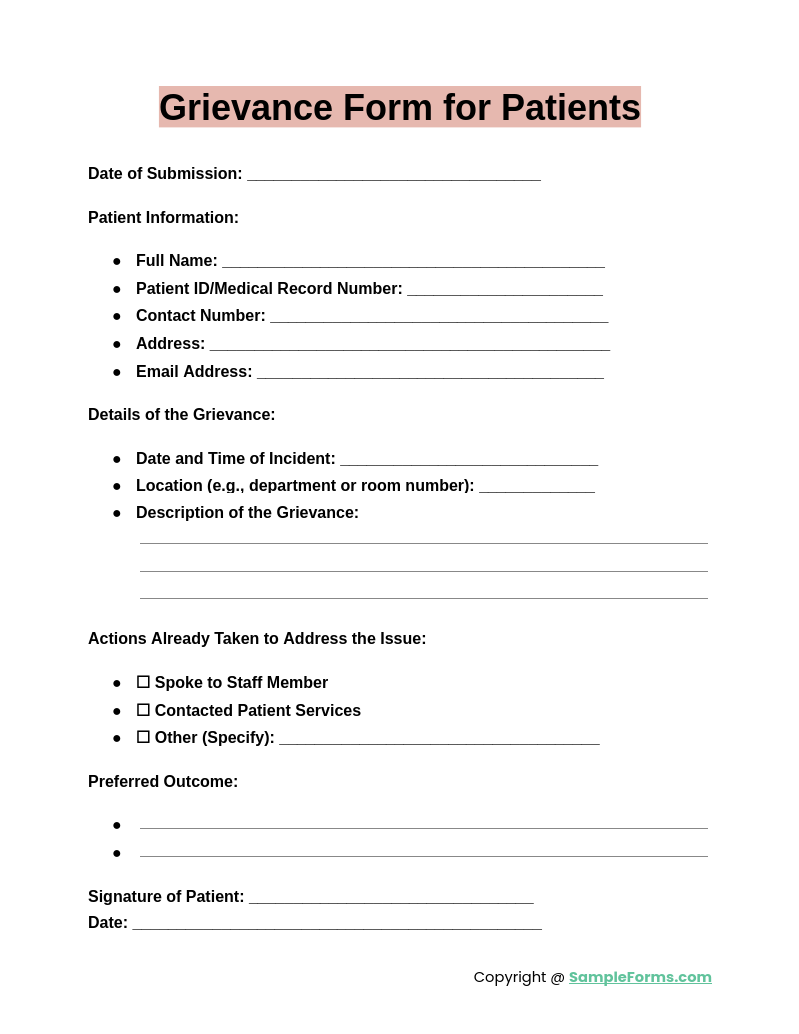
A Grievance Form for Patients provides a formal method to report dissatisfaction with healthcare services. This process safeguards patients’ rights while maintaining compliance, much like a Legal Guardian Form protects dependents’ interests.
Client Grievance Form
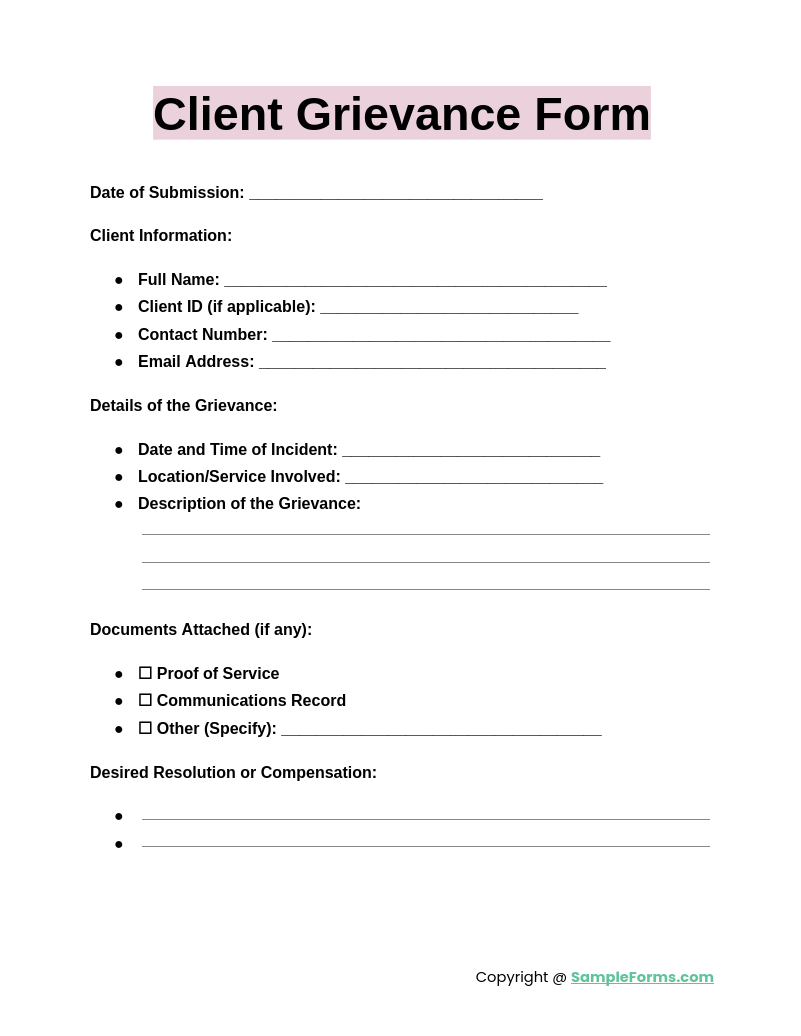
A Client Grievance Form is used to document customer complaints about services or products. It functions as a Legal Form to formalize issues and facilitate resolution, ensuring professionalism and transparency in client relations.
Browse More Grievance Forms
1. Formal Grievance Form
2. Client Grievance Form
3. Grievance Form Sample
4. Employee Grievance Form
5. Public Employee Grievance Form
6. General Grievance Form
7. Grievance Procedure Form
8. Student Grievance Form
9. Complaint and Grievance Form
10. College Grievance Form
11. Grievance Appeal Request Form
12. Tenant Grievance Form
13. Environmental Grievance Form
14. Family Complaint Grievance Form
15. Administrative Grievance Form
16. Member Grievance Form
17. Official Grievance Form
18. Simple Grievance Form
19. Confidential Grievance Form
20. Grievance Service Form
21. Official Career Grievance Form
22. Grievance Lodgement Form
23. Grievance Statement Form
24. Bank Grievance Form
25. Local Grievance Form in PDF
26. Grievance Process Form
27. Grievance Provider Form
28. Student Concern Grievance Form
29. Grievance Redressal Form
30. Commercial Grievance Form
31. Employee Contract Grievance Form
32. Basic Grievance Form
33. Grievance Complaint Form
34. Grievance Committee Form
35. Disability Services Grievance Form
36. Grievance Registration Form
37. Staff Grievance Form
38. Vendor Grievance Form
40. Pensioners Grievance Form
41. Grievance Report Form
42. Internal Grievance Form
43. Model Grievance Form
44. Public Grievance Form
45. Physician Grievance Form
46. Non Faculty Grievance Filling Form
47. Grievance Long Form
48. Non Standard Grievance Form
49. Move Up Grievance Form
50. Position Grievance Form
51. Employment Grievance Form
What is the purpose of a grievance?
The purpose of a grievance is to provide individuals a formal platform to raise concerns or complaints for resolution. Key objectives include:
- Ensuring Accountability: It holds organizations responsible for addressing complaints, similar to a Legal Declaration Form for establishing formal acknowledgment.
- Promoting Fairness: Grievances ensure equality and justice in handling issues.
- Encouraging Communication: It fosters open dialogue between parties to resolve disputes.
- Safeguarding Rights: Protects individual rights by creating a formal process for addressing concerns.
- Improving Practices: Helps organizations identify and rectify systemic problems.
What do you write in a grievance?
A grievance should clearly outline the issue, supporting evidence, and desired resolution to ensure effective handling. Key components include:
- Issue Details: Describe the incident with specifics, as you would in a Legal Ownership Form for clarity.
- Parties Involved: Identify individuals or departments responsible.
- Supporting Evidence: Attach relevant documents or records.
- Desired Resolution: Clearly state what outcome you seek.
- Contact Information: Provide details for communication during the process.
What happens after a grievance is filed?
After filing, the grievance follows a structured process of investigation, resolution, and feedback. The steps include:
- Acknowledgment: The organization formally accepts the grievance, akin to filing a Legal Guardianship Form to validate submissions.
- Investigation: Relevant parties gather facts and evidence.
- Review: Decision-makers evaluate findings against policies.
- Resolution: Appropriate action is taken to resolve the issue.
- Feedback: The complainant is informed of the outcome.
What are grievance responsibilities?
Grievance responsibilities involve ensuring fair handling of complaints, from filing to resolution. These responsibilities lie with both parties and include:
- Filing Accurately: Complainants must file grievances clearly, similar to submitting a Legal Application Form for formal acknowledgment.
- Investigating Thoroughly: Authorities must investigate impartially.
- Communicating Transparently: Keep all parties informed throughout the process.
- Adhering to Policies: Follow organizational rules for grievance resolution.
- Documenting Outcomes: Maintain proper records for accountability.
What are the benefits of filing a grievance?
Filing a grievance provides personal and organizational advantages by addressing issues systematically. Key benefits include:
- Problem Resolution: Formal complaints lead to actionable solutions, as seen in a Legal Services Contract Form ensuring agreements are upheld.
- Improved Policies: Helps organizations identify areas needing improvement.
- Fairness: Ensures equitable treatment for all parties.
- Rights Protection: Safeguards individual rights within organizations.
- Enhanced Trust: Fosters confidence in organizational systems.
What is an example of grievance?
A grievance example includes reporting workplace harassment or unfair treatment, documented in a Legal Statement Form to ensure formal resolution and accountability.
How serious is a grievance?
A grievance is a formal and serious matter, requiring structured resolution, much like addressing issues through a Restaurant Legal Form for policy compliance.
Do you get paid for a grievance?
You do not receive direct payment for filing a grievance, but financial claims like compensation for harm can be requested in an Injury Report Form.
What qualifies as grievance?
Grievances qualify as issues like policy violations, discrimination, or safety concerns, filed through a Service Form for investigation and resolution.
What are the reasons to file a grievance against your boss?
Reasons include harassment, unfair treatment, or discrimination, with evidence submitted through a Proof of Service Form to ensure accurate complaint processing.
What happens when someone files a grievance against you?
An investigation is initiated, requiring your response and documentation, similar to a Service Evaluation Form, to ensure a fair and transparent process.
What are the outcomes of a grievance?
Outcomes include resolution, policy changes, or disciplinary action. Documentation like a Service Verification Form ensures formal acknowledgment of the decision.
How long does it take to deal with a grievance?
Grievance resolution timelines vary but often take 1-4 weeks, depending on complexity, akin to addressing requests in a Social Service Form.
How to put a grievance against someone?
Submit a formal grievance letter with evidence, following a structured process, similar to filing an Acknowledgment of Service Form for official tracking.
What happens when a patient files a grievance?
The healthcare provider reviews the complaint, initiates an investigation, and responds formally, akin to addressing issues via an IT Service Request Form.
In conclusion, the Grievance Form plays a vital role in addressing complaints effectively. It fosters transparency and accountability in organizations, ensuring a fair process for all parties involved while maintaining professionalism and compliance.
Related Posts
-
5 Steps to Formally File a Harassment Complaint at Work
-
Credit Report Dispute Letter
-
How to Get Security Clearance On a Job Application?
-
5 Ways to Handle Customer Complaints in Food Industry
-
How to Stop Toxic Employee Complaints [ Reasons ]
-
Tips on Dealing With Harassment Complaints [ Types, Steps ]
-
Preventing Social Media Complaints [ Causes, Tips ]
-
8 Steps to Extinguish Customer Complaints
-
What if Managers Ignore Employee Complaints? [ Reasons ]
-
15 Ways to Handle Employee Complaints
-
4 Practical Ways in Handling Customer
-
5 Ways to Handle Customer Complaints
-
How to Handle Tenant Pet Complaints [ with Steps ]
